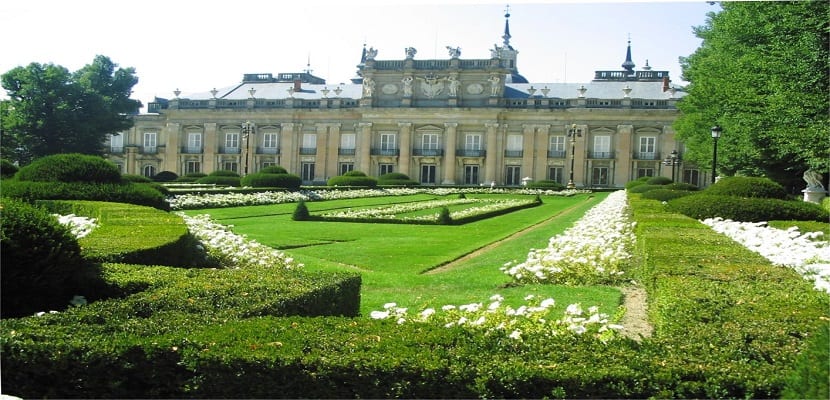
Image | Commons Wikimedia
80 kilometers from Madrid and 13 kilometers from Segovia is the Real Sitio de la Granja de San Ildefonso, better known as Palacio de la Granja, one of the many residences of the Spanish royal family to which they went to enjoy a few days of rest during the summer season.
The Castilian kings of the Middle Ages used to use the province's pine forests as hunting grounds and therefore had several palaces in these places. An example is that of Valsaín, which was rebuilt during the reigns of Carlos I and Felipe II of Austria but which caught fire in 1683.
The Royal Site of the Farm was ordered to be built by Felipe V de Borbón as a personal work for his enjoyment after his abdication. From then on, this palace was his favorite and its use by successive monarchs during the summer lasted until the reign of Alfonso XIII in the XNUMXth century.
At present, the Real Sitio de la Granja de San Ildefonso is a museum and its gardens and monumental fountains attract many tourists and onlookers every year. After the jump we will get to know one of the most beautiful Spanish palaces better.
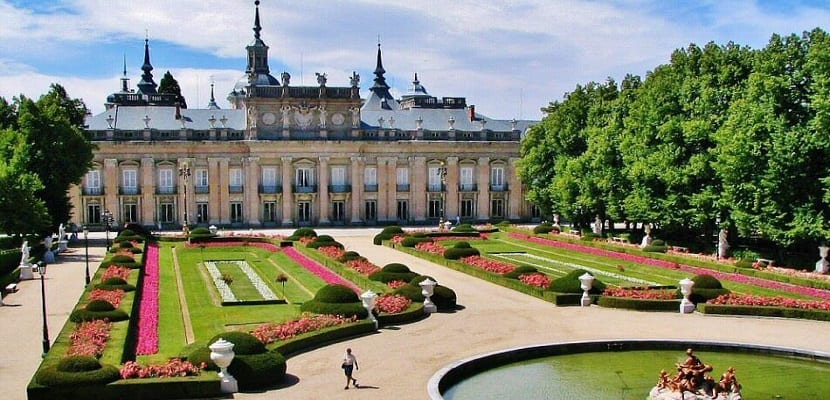
Image | Travel Guides
History of the Royal Palace
Felipe V of Bourbon, Duke of Anjou, became King of Spain in 1700 after the death of the last King of the House of Habsburg, Charles II, without issue. King Felipe V used to frequent the royal mountains of Valsaín and such was his love for those places that he decided to build a palace on the land where the hermitage of San Ildefonso was located., for which he bought the hermitage-farm, the inn and the surrounding land from the monks of Parral.
The works began in 1721 and the project became a kind of Palace of Versailles, the city in which it was born. The layout and design of the gardens also had a classical French-style inspiration as its creator, Le Nôtre, had also been the author of the gardens of the famous Gallic palace.
Three years later the Real Sitio de la Granja reached its maximum splendor and became the preferred residence of the monarch, where he moved with his family and the court in the summers.
On the death of King Felipe V, his wife Queen Isabel de Farnesio moved to the Palacio de la Granja and ordered an expansion of the palace. Thus, between 1727 and 1737 two open courtyards were added, Herradura being the current main entrance to the Real Sitio de la Granja.
During the reign of Carlos III, this royal palace in Segovia acquired its final construction. In later times it would witness many events relevant to the history of Spain such as the wedding of King Carlos IV of Bourbon with María Luisa de Parma, the signing of the Treaty of San Ildefonso between Spain and France or the repeal of the pragmatic sanction in recent years. moments of life of King Fernando VII.
At the beginning of the XNUMXth century, the Real Sitio de la Granja suffered a terrible fire that affected the roof of the entire building and the Casa de los CanónigosFor this reason, the frescoes that decorated the ceilings of the upper floor, various furniture and fabrics that adorned the walls, as well as valuable glass and bronze lamps were destroyed.
Today National Heritage is the one who manages both the Royal Site and the royal collections, which are open to the public to make known a part of the history of Spain.
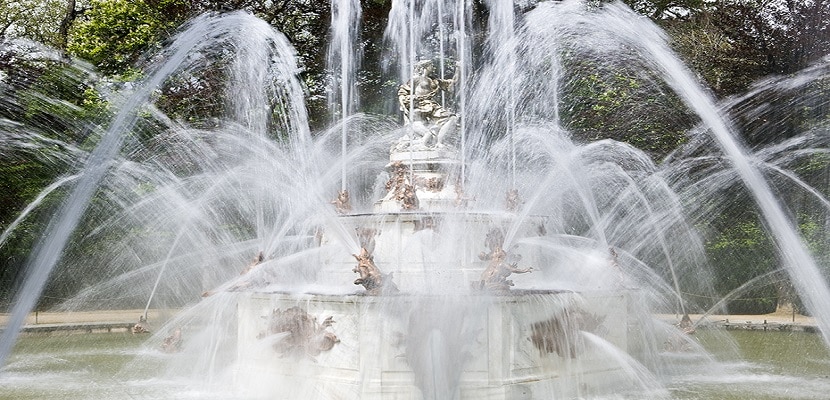
Image | National Heritage
The gardens of the Real Sitio de la Granja
For King Felipe V of Bourbon the palace was as important as the surrounding gardens. That is why he put great effort into its layout and decoration with spectacular monumental fountains that are probably the most popular part of the Real Sitio de la Granja.
These fountains are of great interest not only for their beautiful sculptural ornamentation but also for the good state of conservation in which the original hydraulic system is found., still in operation. All this makes them tourist attractions of great interest at a European and global level.
Due to certain economic problems, the fountains were made of lead to be painted imitating bronze and marble to ennoble them, but the marble statues form the best preserved sculptural group of the time.
Artists such as Fremin, Thierry and Bousseau led a team of sculptors who carried out between 1720 and 1745 this scene animated by the spectacular water games of the fountains.
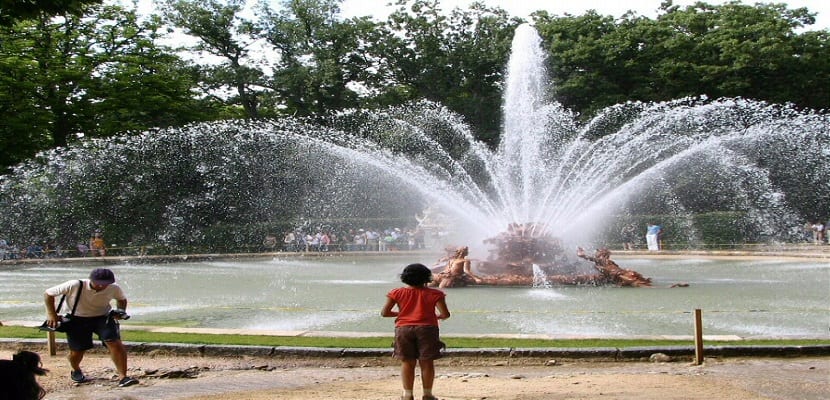
Image | Travel Guides
The water supply for the entire system comes from the Cacera de Peñalara, Morete and Carneros streams. The El Mar pond, located at the highest point of the garden, is filled by pipes, with a capacity of 216.000 m³, supplying most of the system from it. To supply water to the 21 sources there are another eight ponds and more reservoirs.
The sources of the Real Sitio de la Granja are inspired by classical mythology, being that of Diana the Huntress the last one commissioned by Felipe V. Some of the most prominent sources are: the Fountain of Fame, the Fountain of the Horse Race, the Fountain of the Winds, the Fountain of the Jungle or the Andromeda Fountain, among many others.
When to go to the Real Sitio de la Granja?
The best time to visit is because the gardens are lush green and all the flowers are in their splendor. In addition, some fountains are turned on several days a week.
When do you turn on all the sources in the Farm?
May 30, July 25 and August 25.
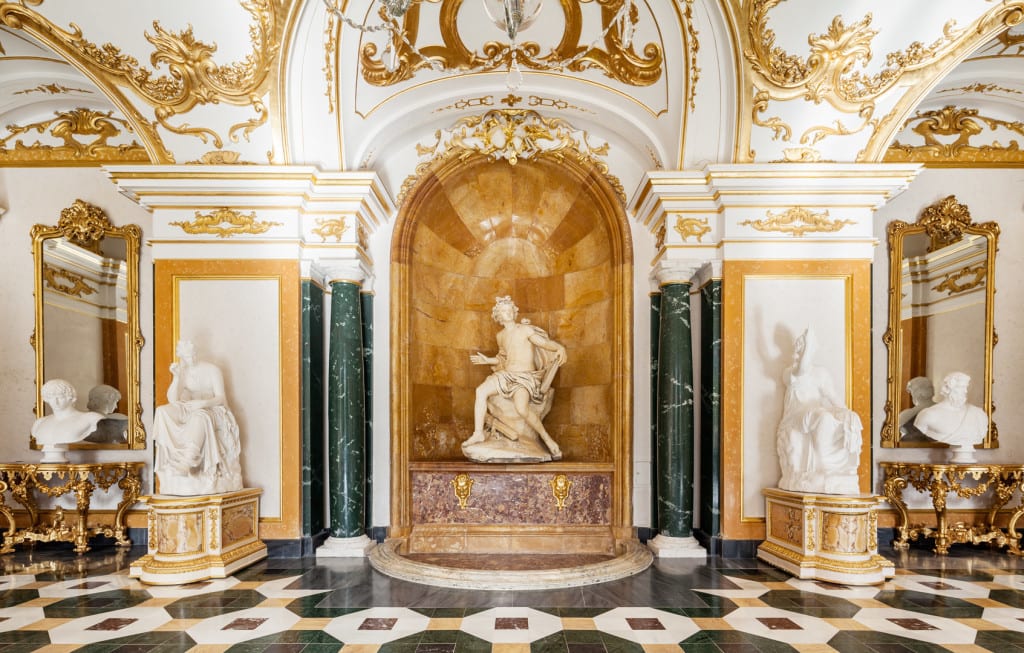
Image | A Fascinating World
When do you light some sources of the Farm?
Between April and October and during Holy Week. They are usually on Wednesdays, Saturdays and holidays at 17:30 p.m. and on Sundays at 13:00 p.m. In summer, in July and August, the Diana fountain is lit from 22:30 p.m. to 23:30 p.m.
Visiting hours and ticket prices
Pricing
The price of tickets to visit the Royal Site of the San Ildefonso Farm is 9 euros for general admission and 4 euros for reduced admission. The price to contemplate the Monumental Fountains is 4 euros.
However, admission is free for children under 5 years of age and for all visitors on May 18 (International Museum Day) and October 12 (National Holiday of Spain, without distinction of nationality).
Visiting schedule
Royal Palace
- Winter hours (October to March)
Tuesday-Sunday: 10:00 - 18:00 - Summer hours (April to September)
Tuesday-Sunday: 10:00 - 20:00
Weekly closing: Mondays throughout the year
Gardens of La Granja
- Hours (October and March) Monday - Sunday: 10:00 - 18:30
- Hours (April) Monday - Sunday: 10:00 - 20:00
- Hours (November to February) Monday - Sunday: 10:00 - 18:00
- Hours (May, first half of June and September) Monday - Sunday: 10:00 - 20:00
- Hours (second half of June, July and August) Monday - Sunday: 10:00 - 21:00
How to get to the Real Sitio de la Granja?
The Real Sitio de la Granja is located in the Plaza de España, nº 15 in San Ildefonso, Segovia. The place can be reached by:
Car
- Madrid-Segovia (by highway): A-6 / AP-6 / AP-61
- Segovia-San Ildefonso: M-601
- Villalba-San Ildefonso: M-601
Train
- AVE Madrid-Segovia-Valladolid
- Madrid-Segovia regional line
Bus
The La Sepulvedana bus company has daily buses from Madrid to Segovia and from Segovia to San Ildefonso.